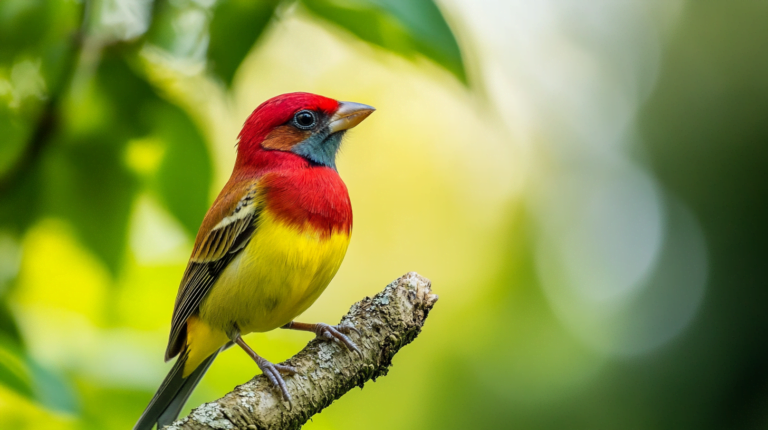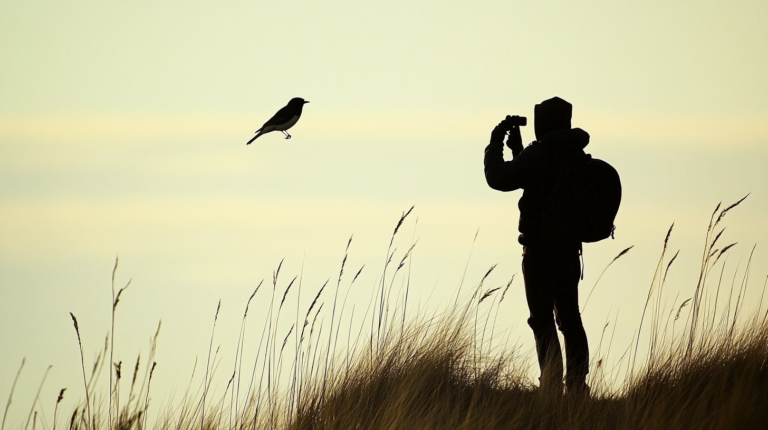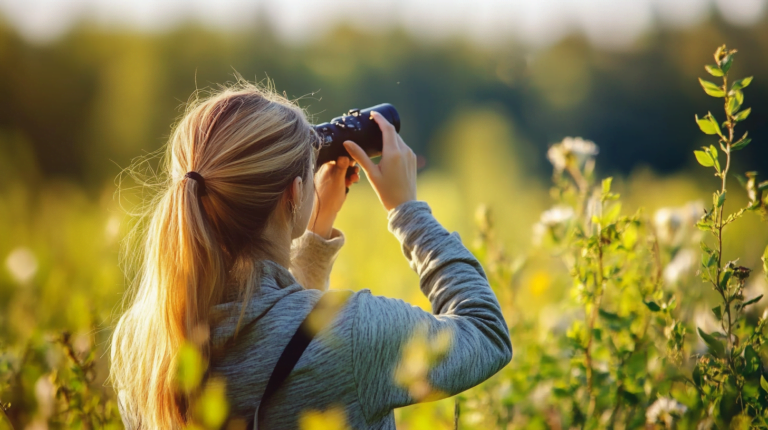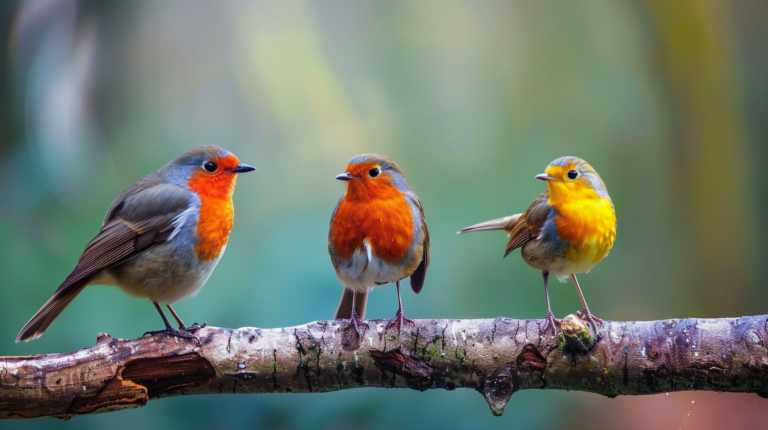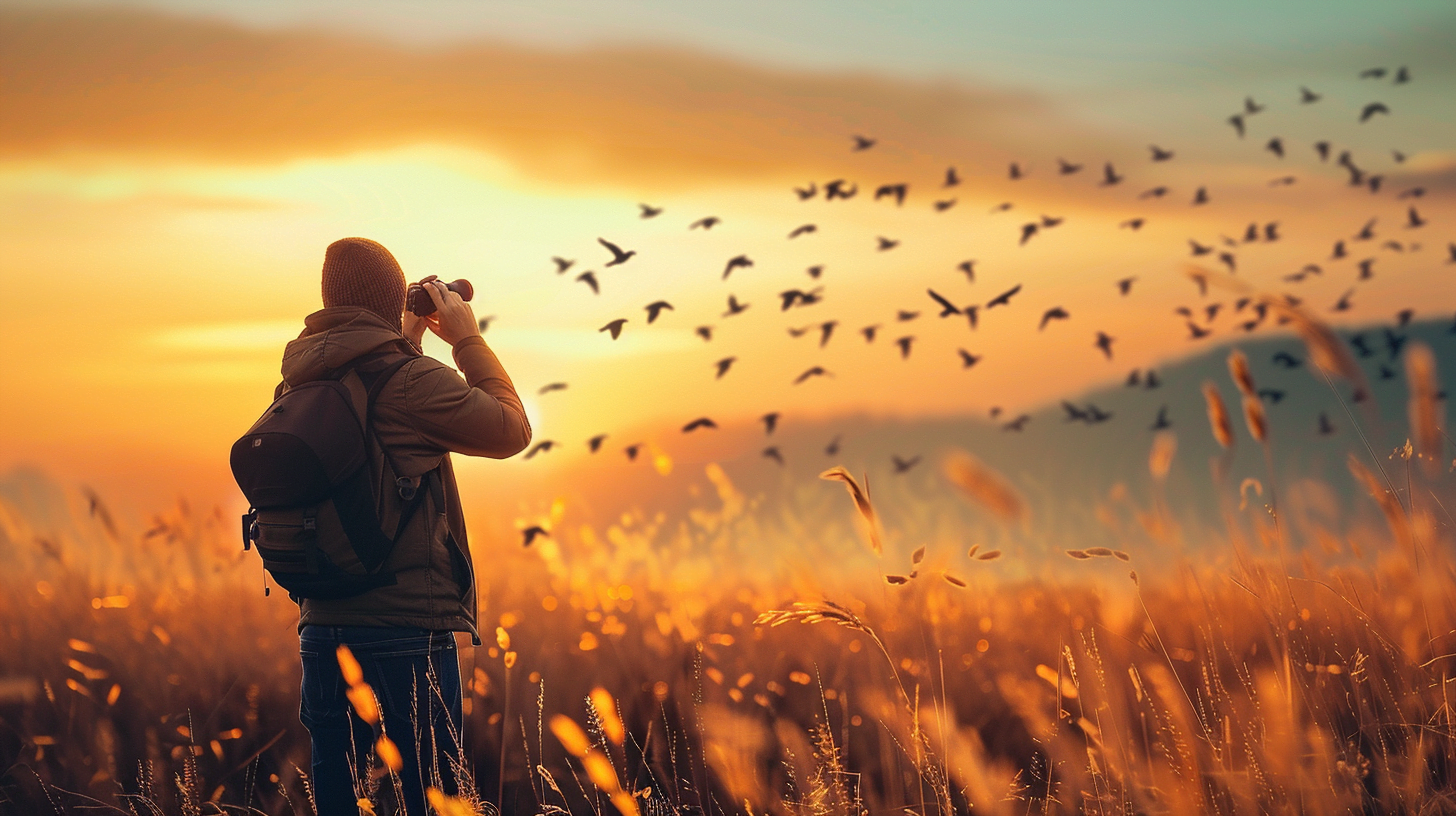
Table of Contents
Bird watching, also known as birding, is a fascinating activity that has captivated millions of people around the world. Whether you’re a seasoned birder or a curious beginner, this comprehensive guide will help you understand why bird watching is more than just a pastime—it’s a rewarding hobby that offers numerous benefits.
What is Bird Watching?
Understanding Bird Watching
Bird watching, or birding, involves observing birds in their natural habitats. This can be done using the naked eye, binoculars, telescopes, or even through bird feeder cameras. Unlike ornithologists, who study birds using formal scientific methods, bird watchers engage in this activity primarily for recreational or social reasons. Bird watching can be as simple as observing birds in your backyard or as adventurous as traveling to different locales to spot rare species.
Historical Context
The term “birdwatcher” was first recorded in 1712, and the practice has evolved significantly since then. Modern bird watching became popular in the late 19th and early 20th centuries, thanks to the development of optical aids like binoculars. Today, bird watching is a global phenomenon, with enthusiasts participating in various activities, from local bird counts to international birding expeditions.
Why People Bird Watch
Connection to Nature
Bird watching offers a unique way to connect with nature. Observing birds in their natural habitats can foster a deep appreciation for the environment and its delicate ecosystems. This connection to nature can be both calming and exhilarating, providing a sense of peace and wonder.
Mental Health Benefits
Bird watching has been shown to have numerous mental health benefits. It encourages mindfulness, reduces stress, and can even alleviate symptoms of anxiety and depression. According to a study by the University of Exeter, people who spend time watching birds experience lower levels of stress and anxiety.
Physical Health Benefits
Bird watching often involves walking, hiking, or even climbing, making it a great way to stay physically active. The physical activity involved in bird watching can improve cardiovascular health, increase stamina, and promote overall well-being.
Social Aspects
Bird watching can be a social activity, bringing together people with a shared interest. Joining bird watching clubs or participating in birding events can help you meet new people, share experiences, and learn from others.
Getting Started with Bird Watching
Essential Gear
To start bird watching, you’ll need some basic equipment:
- Binoculars: Essential for getting a closer look at birds.
- Field Guides: Books or apps that help you identify bird species.
- Notebook: For recording your observations.
Choosing the Right Locations
Birds can be found almost anywhere, but some locations are better than others. Parks, nature reserves, wetlands, and coastal areas are excellent places to start. Early mornings and migration seasons are the best times to observe a variety of species.
Best Times for Bird Watching
Birds are most active during the early morning and late afternoon. Migration seasons, typically in spring and fall, offer the best opportunities to see a wide variety of birds.
Bird Watching Techniques
Using Your Senses
Effective bird watching involves using all your senses. Listen for bird calls and songs, watch for movement, and observe the behavior of birds. This multi-sensory approach can help you spot and identify birds more easily.
Identifying Birds
Identifying birds involves noting their size, color, behavior, and song. Field guides and birding apps can be invaluable tools for identification. Keeping a birding journal or life list can also help you track your observations and improve your identification skills.
Keeping a Birding Journal
A birding journal is a great way to document your observations. Note the date, time, location, and species of birds you see. Include details about their behavior, habitat, and any other interesting observations.
Bird Watching as a Hobby
Characteristics of a Hobby
A hobby is an activity done regularly for pleasure. Bird watching fits this definition perfectly. It can be done casually or with great dedication, making it accessible to people of all ages and skill levels.
Personal Stories and Testimonials
Many bird watchers have personal stories about how they got started and what keeps them engaged. For example, one birder shared how spotting a rare Eurasian hoopoe in Spain left them awestruck and deepened their love for bird watching.

Benefits of Bird Watching
Mental Health Benefits
Bird watching promotes mindfulness and relaxation. Studies have shown that spending time in nature and observing birds can reduce stress, lower blood pressure, and improve overall mental health.
Physical Health Benefits
Bird watching encourages physical activity, whether it’s walking through a park or hiking in the mountains. This can improve cardiovascular health, increase stamina, and promote a healthy lifestyle.
Social Benefits
Bird watching can be a social activity, providing opportunities to meet new people and build a sense of community. Joining bird watching clubs or participating in birding events can help you connect with others who share your passion.
Bird Watching Communities and Organizations
Joining Bird Watching Communities
There are many bird watching communities and organizations you can join. Local bird watching clubs, national organizations like the Audubon Society, and online forums provide opportunities to connect with other bird watchers, share experiences, and learn from each other.
National and International Organizations
Organizations like the British Trust for Ornithology and the Cornell Lab of Ornithology host citizen science projects and provide resources for bird watchers. These organizations play a crucial role in bird conservation and research.
Advanced Bird Watching
Participating in Bird Counts and Citizen Science Projects
Advanced bird watchers often participate in bird counts and citizen science projects. These activities help track bird populations and migration patterns, contributing valuable data to scientific research.
Traveling for Bird Watching
Traveling to birding hotspots around the world can be an exciting way to see new species and explore different habitats. Popular destinations include the rainforests of South America, the wetlands of Africa, and the coastal areas of North America.
Bird Photography and Videography
Bird photography and videography are popular among advanced bird watchers. Capturing images of birds in their natural habitats requires skill and patience but can be incredibly rewarding.
Challenges and Etiquette in Bird Watching
Common Obstacles for Beginners
Beginners may face challenges such as identifying birds, finding good birding spots, and understanding bird behavior. Joining a bird watching club or going on guided bird walks can help overcome these obstacles.
Bird Watching Etiquette
Respecting wildlife and their habitats is crucial in bird watching. Keep a safe distance from birds, avoid disturbing their nests, and follow ethical bird watching practices. This ensures that birds remain undisturbed and that their habitats are preserved.
Conclusion
Embracing Bird Watching as a Hobby
Bird watching is a rewarding hobby that offers numerous benefits. It connects you with nature, improves mental and physical health, and provides opportunities for social interaction. Whether you’re a beginner or an experienced birder, there’s always something new to discover in the world of bird watching.
Final Thoughts and Call to Action
If you haven’t tried bird watching yet, now is the perfect time to start. Grab a pair of binoculars, find a local park, and begin your journey into the fascinating world of birds. Happy birding!

Additional Resources
Recommended Books and Field Guides
- “The Sibley Guide to Birds” by David Allen Sibley
- “National Geographic Field Guide to the Birds of North America”
Useful Websites and Apps
- eBird
- Merlin Bird ID
- Audubon Bird Guide
Upcoming Bird Watching Events and Festivals
- The Great Backyard Bird Count
- The Christmas Bird Count
FAQs
What equipment do I need to start bird watching?
Basic equipment includes binoculars, a field guide, and a notebook.
Can bird watching be done in urban areas?
Yes, birds can be found in urban parks, gardens, and even on city streets.
How do I identify different bird species?
Use field guides and birding apps to help identify birds based on their size, color, behavior, and song.
What are the best times of year for bird watching?
Spring and fall migration seasons are the best times to see a variety of bird species.
How can I join a bird watching community?
Look for local bird watching clubs, join national organizations like the Audubon Society, or participate in online birding forums.
